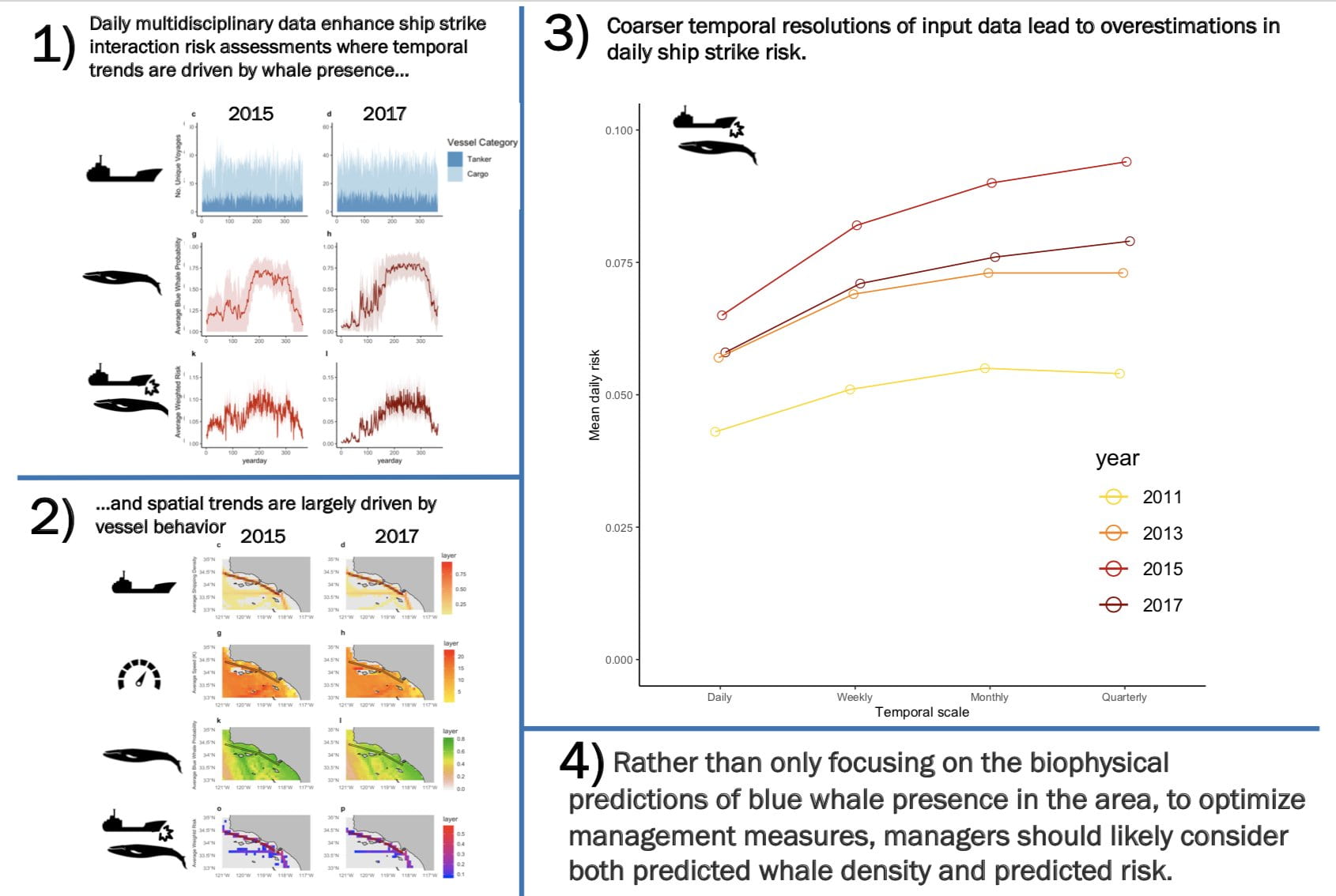Hannah Blondin published her first-year paper on how blue whale ship strike risk changes daily examining diel patterns in whale behavior and AIS data on the same scales. The coarser our resolution of analysis, the greater ship-strike risk. The graphical abstract below provides a good analysis of the findings!

H. Blondin, B. Abrahms, L. Crowder, E.L. Hazen. 2020. Combining high temporal resolution blue whale distribution and vessel tracking data improves estimates of ship strike risk in the Southern California Bight. Biological Conservation. DOI: 10.1016/j.biocon.2020.108757. PDF
Abstract: When assessing harmful human-wildlife interactions, researchers often attempt to calculate the risk that an interaction will occur. However, these analyses often quantify risk based on temporally static or spatially coarse measures of species distributions and human activity. As a result, risk estimates often do not reflect the dynamic nature of animal movement and anthropogenic uses of the environment. To illustrate the impacts of various temporal resolutions of data, we present a case study of blue whale (Balaenoptera musculus) ship strike risk in the U.S. Southern California Bight by combining predicted daily whale distributions with continuous vessel movement data. This represents the first effort to characterize blue whale ship strike risk by including the most recent high-resolution estimates of eastern Pacific blue whale distribution. We used these data to compare the ship strike risk models at varying temporal resolutions to address the effect of using coarser resolution input data. Our results show that it is critical to account for both dynamic patterns of human activity and species occurrences when assessing the risk of human-wildlife conflict. Analysis based on higher resolutions of potential interactions show greater variability in risk. Coarser resolution data mask variability in risk that may result from patchy conditions of blue whale habitat and/or variations in vessel traffic. We also demonstrate that coarser temporal resolutions lead to overestimations of risk. For highly mobile species subject to human-wildlife interactions such as blue whales, long-term environmental solutions depend on matching ecological data to human activity data at the most appropriate scale.
